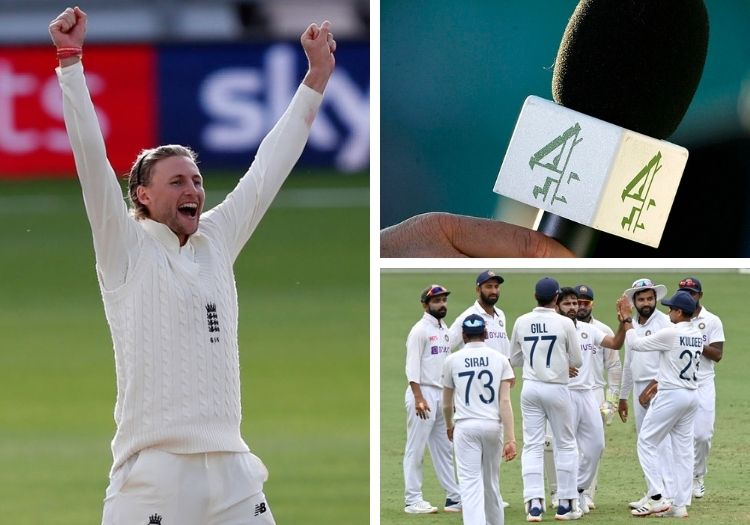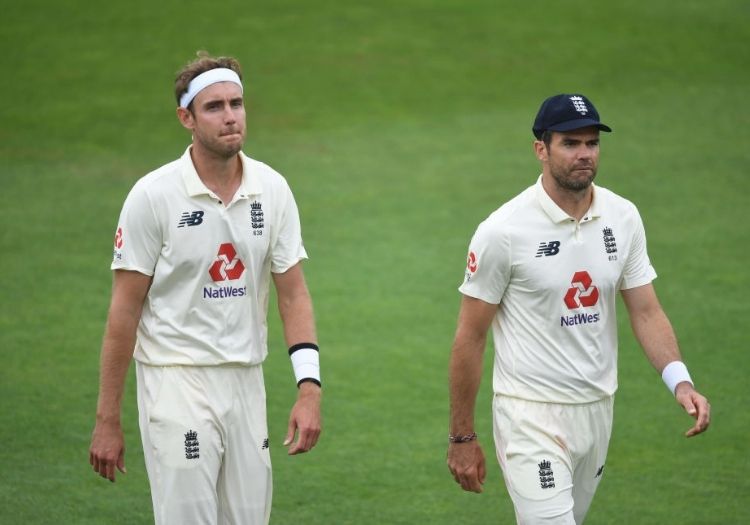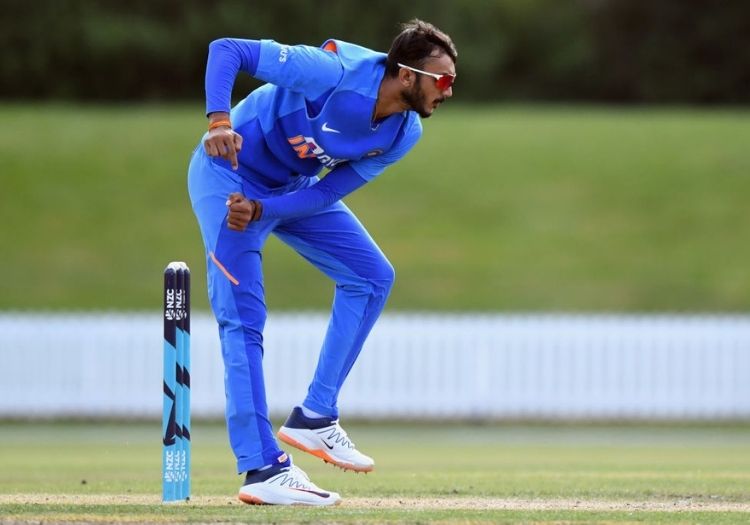NICK HOWSON: Will Joe Root continue his good form? What impact will the hosts' left-arm spinners have? And will the heroes from Australia return? The Cricketer answers the key questions ahead of the four Tests...


Jack Leach: Playing in India a “dream come true” after tough 2020
Chris Silverwood defends England's rotation policy and sends message to supporters
India Test tour of England 2021 fixtures: Full schedule, dates
Two IPLs in six months. A pair of Tests in Sri Lanka. A 12-match tour of India. A full international summer. The T20 World Cup. The Ashes. Bio-secure bubbles. Regular Covid-19 examinations. Days and weeks of quarantine.
Something had to give.
It might be disrespectful for some, an attack on the sport's traditions to others but there is little doubting how necessary the decision was to rotate England's all-format players in 2021.
Covid-19 has not only made the schedule more intense, but the experience has been diluted. There are very few instances of crowds being in attendance. The four walls of the hotel room are often your only company. Swabs constantly live down your throat and up your nose.
When players dreamt of going on tour with their country or eyed an outing in overseas competition, it wouldn't have looked like this.
The reality is playing cricket isn't the same experience as it used to be. Notwithstanding the physical demands, it is as mentally gruelling a task as ever.
Traditionalists won't like that England are entering the series either with players sat on the sidelines, or with others preparing to fly home soon after it begins. Neither will they be sympathetic to the accommodation of the IPL. Just don't mention the rest of the (international) cricket.
Jonny Bairstow, Sam Curran and Mark Wood will miss the first two Tests at least while Jos Buttler flies home after the opening game in Chennai. The silver-lining is Jofra Archer, Ben Stokes and Rory Burns are back and Ben Foakes is bound for a recall. But those facts don't fit the narrative, do they?
It goes without saying that in an ideal scenario everyone would want England to field a first-choice XI for all four Tests of this series. But ideal scenarios no longer exist in the current climate. We must conform, adapt and modify our expectations. You're kidding yourself, otherwise.
And as for the IPL being used as a stick to beat the ECB with, it cannot be forgotten the contribution the league has made in England's success. It helped produce a fully-formed Archer, develop the leadership of Eoin Morgan, the match-winning ability of Stokes and skills of Buttler, Bairstow and Roy, among others.
We're too far down the road for the ECB to turn their back on it now. The players enjoy playing in it and their movements will not be under the same constraints, with their families having been permitted to attend in the United Arab Emirates.

Could we see Anderson and Broad link-up in India?
England used James Anderson and Stuart Broad expertly in Sri Lanka. Rested and relaxed they were given a Test each, performed ably and made a major contribution to the 2-0 series win. It was possibly the best either have performed in Asia.
Aside from the nine wickets, they collected between them, the most impressive thing was the control the veteran pair exerted. We know all about their skill and wicket-taking ability, but they squeezed Sri Lanka from the outset and never let them wriggle free. Of all their combined numbers from Galle, the 1.40 economy rate was the most eye-catching.
Though Dom Bess and Jack Leach came good during the penultimate innings of the series, the spin pair didn't have it all their own way. It might be that Root takes on more responsibility in India, opening up an extra spot for a batter or bowler.
And given the success of Anderson and Broad it certainly raises the prospect of, wait for it, playing them both together.
There are clearly some complications to factor in. There is a returning Stokes and a firing Archer to accommodate; Chris Woakes too is rested after his quarantine period ruled him. And clearly, India's batting line-up possesses more class and steel.
My colleague Huw Turbervill has previously written about the Anderson-Broad axis, proposing that both start in Chennai. It might be that we have to wait until the Pink ball, day-night Tests in Ahmedabad when conditions might suit.
There is some irony that while on the one hand rotation is being bemoaned, on the other it offers England a deluge of options over how to shape their XI.
A dry January it certainly wasn't for Joe Root, who was the toast of England in Sri Lanka with 426 runs at 106.50 to inspire the series whitewash.
Importantly, the England skipper arrives in India in form in the right conditions. He's being spoken about in the same vain as Graham Gooch in terms of his prowess against spin and is once again the prized wicket of the England line-up, which hasn't always been the case in recent years.
If this is to be the defining year of Root's tenure as England captain (and maybe even his last) then it couldn't have begun in better fashion, that is for sure.
But he won't be collecting accolades at the end of 2021 for his prowess in Sri Lanka, no disrespect. India represents probably his toughest challenge of the year, given the conditions, the form of the opponent and variable squad he has to work with.
The first Test in Chennai represents his 100th Test for England. It is vital that the landmarks don't end there.
Lasith Embuldeniya's success against England at Galle cannot have evaded India's attention. His 15 wickets came at 27.66 across the two Tests and included getting both openers Dom Sibley and Zak Crawley three times in a row. Indeed, he did for the Kent batsman in all four innings.
Naturally, England's right-hand heavy top order allow Embuldeniya to find his rhythm. Once the 24-year-old found his range only Root had anything resembling an answer.
Burns and Stokes' return does at least mean England have alternative options, but the top six will still contain Sibley, Crawley, Root, Buttler, Ollie Pope and Foakes at some stage in the series.
With Ravindra Jadeja out injured, India are faced with a dilemma over how to shape their team.
Axar Patel's selection in the 18-man squad for the series suggests Virat Kohli has got at least one eye on this role. The 27-year-old is uncapped at Test level and has limited first-class experience in India, but his prowess in the IPL suggests he's comfortable on the biggest stage. He also hits a long ball.
Kuldeep Yadav represents a slightly more established option. The last of his six Tests to date came when India were in Australia in 2018-19 but with 24 wickets in those half a dozen Tests he has enjoyed success at this level.
Neither, however, are automatic picks in the most competitive India XI in years. It would be a horse-for-courses selection which Ravi Shastri's side do not necessarily need to indulge. Perhaps how England cope with Ravichandran Ashwin might influence their thoughts.

Will India opt for a left-arm spin option?
Virat Kohli. Hardik Pandya. KL Rahul. Ishant Sharma. Jasprit Bumrah. Ashwin. India are welcoming back their brains trust for the visit of England after the series win in Australia.
One look at the strength of the hosts' squads and you'd be forgiven for overlooking the absence of Mohammed Shami, Umesh Yadav and Jadeja, whose fitness will continue to be monitored.
Though T Natarajan has been rested for the Tests, many of the star names from Brisbane will jostle for the starting birth in Chennai. Mohammed Siraj, Navdeep Saini, Shardul Thakur, Washington Sundar and Mayank Agarwal were among the unlikely group of heroes, yet the deluge of star names ready to return leaves their places up for debate.
Indeed, it might be that only the top four from Brisbane plus Rishabh Pant survive from that remarkable success. There can't have been too many occasions where so many changes come from one of the great Test successes. And yet you could argue that India will be significantly stronger.
India would have been a hugely daunting prospect off the back of the triumph in Australia in any conditions. But with such depth at their disposal and some refreshed star names available again, it's hard to see them doing anything other than swatting England aside - regardless of who gets the nod.
The home straight, final throws, curtain call, closing time and grand finale. The preliminary stage of the World Test Championship is coming to an end. Thanks for coming.
It has largely been an inconsequential waste of time. Not all of that fault lays at the feet of the ICC, but some of it does.
They could not have foreseen a global pandemic which would rip up the format and schedule. Just 10 series and 28 Tests were possible before the virus played havoc. Since then, it has been a footnote.
The central issue was that it forced alterations to a format and schedule which was already flawed. The ICC were attempting to fix the mainsail while the hull continued to take on water. It has been a sinking ship from the start.
An organiser of a competition in the current calendar once warned me that that simplicity is absolutely key when forming a new tournament otherwise you're audience are gone. With an unbalanced fixture list and complicated point system, the ICC were fighting a losing battle well before the pandemic hit. The idea on its own wasn't enough.
After changing the way the two qualifiers for the final would be determined (percentage of points won out of points contested) four sides remain (just) in the frame.
Australia's visit to South Africa being pulled means these are the final Tests that will go towards determining the qualifiers. The 2019-21 edition continues in Pakistan, Bangladesh, West Indies and Sri Lanka.
New Zealand have now qualified for the final and fortunately, it doesn't require a maths degree to determine who will join them.
Both India and England largely have their destiny in their own hands. The home side need to win at least two Tests and go on to claim the series, while the tourists must win three. Any other outcome sees Australia progress.
The final is pencilled in for late June in England, probably at either The Ageas Bowl or Lord's. And then we go again. Hopefully, by then, the ICC boffins will have come up with something easier to digest and even Covid-19 proof. They have now been warned.
It remains to be seen how much of one of the biggest Test series on the circuit is played in front of spectators.
Cases of Covid-19 across India remain in double figures. The first Test will definitely be played behind-closed-doors.
The second Test looks set to be thrown open to fans, with the MA Chidambaram Stadium 50 per cent full for each of the five days.
The third and fourth Tests of the series will see records tumble when they are played in the biggest-capacity cricket stadium in the world.
The Sardar Patel Stadium was re-opened following a huge renovation last year but as yet, no matches have been played at the venue.
This series will mark the first time international cricket has been played at the Ahmedabad since the update, which has expanded the capacity to 110,000.
But the occasion will be somewhat marred if they go off without a single spectator present.
The BCCI have raised the prospect of socially-distanced spectators being permitted to watch - such a vast ground does at least have this advantage - and if things go off without a hitch in Chennai those hopes will swell. But there is little doubt we're operating on a day-by-day basis.
The governing body are not going to go down without a fight. But the idea that a new world record for the biggest recorded crowd to watch a cricket match will be set is ambitious at best, with restrictions also likely to be in place for the T20s which are also in Ahmedabad.
For matches where an official attendance was registered, the 2015 World Cup final at the MCG between Australia and New Zealand, which was watched live by 93,013 people, remains the benchmark.
It remains to be seen when we get even remotely close to that figure again.
Of course, the BCCI are hopeful they will be able to stage the IPL both on home soil and with fans, having moved the 13th edition behind closed doors to the UAE.
The schedule in 2021, with a T20 World Cup to come in India too, does not allow that competition to be moved so their hand will be forced when indeed it does go ahead in April and May.
Dialogue around the absence of fans at cricket events has somewhat jumped the shark. However, India return for their first home matches since the pandemic hit having just played in front of crowds. As we know, while they were embraced by some, they were abused by others.
Despite the enormity of the Tests, this will be a thump back down to earth for the first Test at least. The Australia series was a joyous occasion but now reality hits.
For England, however, they haven't played in front of a crowd since mid-February. It'll be fascinating to see how their performance responds to the atmosphere from afar, however partisan it might be.
One final thought. While players from both nations are regularly tested, asked to isolate with limited movement in their hotels and refrain from celebrating overzealously, fans in their many thousands will surround them. They'd only be human if they were somewhat uncomfortable by that prospect.
A full overseas England Test series will be shown on free-to-air television for the first time ever. It is the lockdown bonus we never knew was coming.
It is staggering to think given all the interested parties in the market for live sport (Sky, BT, BBC, Amazon and Disney to name a few) that an old friend is reappearing after a 16-year hiatus to host one of the biggest tours on the circuit.
I would hate to be in the nerve centre of the corporation which doesn't obtain next winter's Ashes series, which remains out for tender. Each has a piggy bank ready to be smashed open, you'd think.
Not since the 2005 Ashes has Test cricket graced C4. If you haven't turned over since then, Big Brother is no more, Jimmy Carr is everywhere and all other entertainment is provided by the documenting of people doing their jobs. India and England's cricketers will be right at home.
It remains to be seen how the coverage is structured, but Sir Alastair Cook and Andrew Strauss will lead the broadcast, anchored by jack-of-all-trades Rishi Persad. But expect a stripped-back, no thrills production taken directly from host broadcaster Star Sports.
Between now and then, and likely during, you'll see plenty snigger about Dermot Reeve, Mambo No.5 and the 2:40 pm from Wincanton.
While it is unlikely that four Tests, five T20s and three ODIs (if indeed the rights are obtained for the white-ball matches) will inspire a new generation of cricketers over the next two months (have you not seen it outside?), many will have something they've not had for 16 years: a realistic choice. After the World Cup final in 2019 and the first batch of T20s on the BBC last year, English cricket is penetrating the mainstream once again. And we still have The Hundred to come.
There will be some interest from afar in the viewing figures. The World Cup final saw 5.2 million tune into Channel Four and while the matches are not on at totally ideal times (4am and 8am starts) it is an intriguing subtext to Test cricket's return to FTA. Former ECB chairman Colin Graves once said the format would bankrupt the game if made freely available to the public.
It might also be a reminder of the brilliance of Sky Cricket. While many question their wider impact on the game (indeed it was the main subject of last year's DCMS hearing) the quality of the coverage is undeniable. The absence of Nasser Hussain and Mike Atherton over the coming weeks will be felt hard.
Our coverage of India vs England is brought to you in association with Dafabet India. For more on Dafabet and to place a bet, click here
Subscribe to The Cricketer for exclusive content every day: The inside track on everything England - including leading coverage of England in India, award-winning analysis, breaking news and interviews and the only place for in-depth county coverage all year round. Plus: An ad-free app experience at your fingertips. Subscribe to thecricketer.com today for just £1.